Propanedinitrile,2,2-dichloro-
Modify Date: 2024-01-02 19:16:49

Propanedinitrile,2,2-dichloro- structure
|
Common Name | Propanedinitrile,2,2-dichloro- | ||
|---|---|---|---|---|
| CAS Number | 13063-43-9 | Molecular Weight | 134.95200 | |
| Density | 1.312 g/mL at 25 °C(lit.) | Boiling Point | 97 °C(lit.) | |
| Molecular Formula | C3Cl2N2 | Melting Point | N/A | |
| MSDS | N/A | Flash Point | >230 °F | |
| Name | Dichloromalononitrile |
|---|---|
| Synonym | More Synonyms |
| Density | 1.312 g/mL at 25 °C(lit.) |
|---|---|
| Boiling Point | 97 °C(lit.) |
| Molecular Formula | C3Cl2N2 |
| Molecular Weight | 134.95200 |
| Flash Point | >230 °F |
| Exact Mass | 133.94400 |
| PSA | 47.58000 |
| LogP | 1.20746 |
| Vapour Pressure | 42.5mmHg at 25°C |
| Index of Refraction | n20/D 1.431(lit.) |
Synonym:Malononitrile, dichloro Section 2 - COMPOSITION, INFORMATION ON INGREDIENTS
Risk Phrases: 23/24/25 Section 3 - HAZARDS IDENTIFICATION EMERGENCY OVERVIEW
Toxic by inhalation, in contact with skin and if swallowed.Lachrymator (substance which increases the flow of tears).Toxic. Potential Health Effects Eye: Causes severe eye irritation. Lachrymator (substance which increases the flow of tears). May cause chemical conjunctivitis and corneal damage. Skin: Causes severe skin irritation. Ingestion: Harmful if swallowed. May cause gastrointestinal irritation with nausea, vomiting and diarrhea. Inhalation: May cause respiratory tract irritation. May cause burning sensation, coughing, wheezing, laryngitis, shortness of breath, headache, nausea, and vomiting. Chronic: Effects may be delayed. Section 4 - FIRST AID MEASURES Eyes: Immediately flush eyes with plenty of water for at least 15 minutes, occasionally lifting the upper and lower eyelids. Get medical aid immediately. Do NOT allow victim to rub eyes or keep eyes closed. Skin: Get medical aid. Flush skin with plenty of water for at least 15 minutes while removing contaminated clothing and shoes. Ingestion: Never give anything by mouth to an unconscious person. Get medical aid immediately. Do NOT induce vomiting. If conscious and alert, rinse mouth and drink 2-4 cupfuls of milk or water. Inhalation: Get medical aid immediately. Remove from exposure and move to fresh air immediately. If breathing is difficult, give oxygen. Do not use mouth-to-mouth resuscitation if victim ingested or inhaled the substance; induce artificial respiration with the aid of a pocket mask equipped with a one-way valve or other proper respiratory medical device. Notes to Physician: Section 5 - FIRE FIGHTING MEASURES General Information: As in any fire, wear a self-contained breathing apparatus in pressure-demand, MSHA/NIOSH (approved or equivalent), and full protective gear. During a fire, irritating and highly toxic gases may be generated by thermal decomposition or combustion. Vapors may be heavier than air. They can spread along the ground and collect in low or confined areas. Extinguishing Media: In case of fire, use water, dry chemical, chemical foam, or alcohol-resistant foam. Section 6 - ACCIDENTAL RELEASE MEASURES General Information: Use proper personal protective equipment as indicated in Section 8. Spills/Leaks: Absorb spill with inert material (e.g. vermiculite, sand or earth), then place in suitable container. Section 7 - HANDLING and STORAGE Handling: Wash thoroughly after handling. Remove contaminated clothing and wash before reuse. Use with adequate ventilation. Do not get in eyes, on skin, or on clothing. Do not ingest or inhale. Use only in a chemical fume hood. Do not breathe vapor. Storage: Store in a cool, dry, well-ventilated area away from incompatible substances. Keep containers tightly closed. Section 8 - EXPOSURE CONTROLS, PERSONAL PROTECTION Engineering Controls: Facilities storing or utilizing this material should be equipped with an eyewash facility and a safety shower. Use adequate ventilation to keep airborne concentrations low. Exposure Limits CAS# 13063-43-9: Personal Protective Equipment Eyes: Wear appropriate protective eyeglasses or chemical safety goggles as described by OSHA's eye and face protection regulations in 29 CFR 1910.133 or European Standard EN166. Skin: Wear appropriate protective gloves and clothing to prevent skin exposure. Clothing: Wear appropriate protective clothing to prevent skin exposure. Respirators: Wear a NIOSH/MSHA or European Standard EN 149 approved full-facepiece airline respirator in the positive pressure mode with emergency escape provisions. Section 9 - PHYSICAL AND CHEMICAL PROPERTIES Physical State: Clear liquid Color: clear yellow Odor: None reported. pH: Not available. Vapor Pressure: Not available. Viscosity: Not available. Boiling Point: 97 deg C @ 760.00mmHg Freezing/Melting Point: Not available. Autoignition Temperature: Not applicable. Flash Point: > 112 deg C (> 233.60 deg F) Explosion Limits, lower: Not available. Explosion Limits, upper: Not available. Decomposition Temperature: Not available. Solubility in water: Not available. Specific Gravity/Density: 1.3120g/cm3 Molecular Formula: C3Cl2N2 Molecular Weight: 134.95 Section 10 - STABILITY AND REACTIVITY Chemical Stability: Stable under normal temperatures and pressures. Conditions to Avoid: Incompatible materials, excess heat. Incompatibilities with Other Materials: Strong acids, strong bases, strong oxidizing agents, strong reducing agents. Hazardous Decomposition Products: Hydrogen chloride, nitrogen oxides, carbon monoxide, carbon dioxide, chloride fumes. Hazardous Polymerization: Has not been reported. Section 11 - TOXICOLOGICAL INFORMATION RTECS#: CAS# 13063-43-9: OO3740000 LD50/LC50: CAS# 13063-43-9: Draize test, rabbit, skin: 200 uL/24H Severe; Oral, rabbit: LD50 = >126 mg/kg; Oral, rat: LD50 = 130 mg/kg. LD50: Oral, rat = 130 Carcinogenicity: Dichloromalononitrile - Not listed by ACGIH, IARC, or NTP. Other: See actual entry in RTECS for complete information. Section 12 - ECOLOGICAL INFORMATION Section 13 - DISPOSAL CONSIDERATIONS Dispose of in a manner consistent with federal, state, and local regulations. Section 14 - TRANSPORT INFORMATION IATA Shipping Name: TOXIC LIQUID, ORGANIC, N.O.S.* Hazard Class: 6.1 UN Number: 2810 Packing Group: II IMO Shipping Name: TOXIC LIQUID, ORGANIC, N.O.S. Hazard Class: 6.1 UN Number: 2810 Packing Group: II RID/ADR Shipping Name: TOXIC LIQUID, ORGANIC, N.O.S. Hazard Class: 6.1 UN Number: 2810 Packing group: II Section 15 - REGULATORY INFORMATION European/International Regulations European Labeling in Accordance with EC Directives Hazard Symbols: T Risk Phrases: R 23/24/25 Toxic by inhalation, in contact with skin and if swallowed. Safety Phrases: S 24/25 Avoid contact with skin and eyes. WGK (Water Danger/Protection) CAS# 13063-43-9: No information available. Canada None of the chemicals in this product are listed on the DSL/NDSL list. CAS# 13063-43-9 is not listed on Canada's Ingredient Disclosure List. US FEDERAL TSCA CAS# 13063-43-9 is not listed on the TSCA inventory. It is for research and development use only. SECTION 16 - ADDITIONAL INFORMATION N/A |
CHEMICAL IDENTIFICATION
HEALTH HAZARD DATAACUTE TOXICITY DATA
|
| Hazard Codes | T:Toxic; |
|---|---|
| Risk Phrases | R23/24/25 |
| Safety Phrases | S26-S27-S37/39 |
| RIDADR | UN 2810 6.1/PG 2 |
| WGK Germany | 3 |
| RTECS | OO3740000 |
| Packaging Group | III |
| Hazard Class | 6.1 |
| HS Code | 2926909090 |
|
~% 
Propanedinitril... CAS#:13063-43-9 |
| Literature: US2359266 , ; |
|
~% 
Propanedinitril... CAS#:13063-43-9 |
| Literature: Justus Liebigs Annalen der Chemie, , p. 648 - 655 |
|
~% 
Propanedinitril... CAS#:13063-43-9 |
| Literature: Chemische Berichte, , vol. 55, p. 1260 Chemische Berichte, , vol. 58, p. 1703 |
| Precursor 3 | |
|---|---|
| DownStream 7 | |
| HS Code | 2926909090 |
|---|---|
| Summary | HS:2926909090 other nitrile-function compounds VAT:17.0% Tax rebate rate:9.0% Supervision conditions:none MFN tariff:6.5% General tariff:30.0% |
| EINECS 235-955-4 |
| MFCD00001841 |
| 2,2-dichloropropanedinitrile |
| DICHLOROMALONONITRILE |
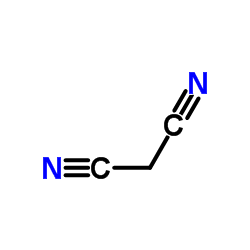

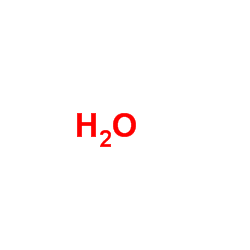

 CAS#:661-97-2
CAS#:661-97-2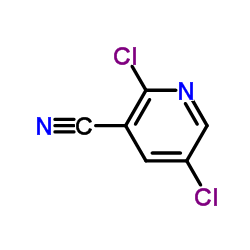 CAS#:126954-66-3
CAS#:126954-66-3 CAS#:335-01-3
CAS#:335-01-3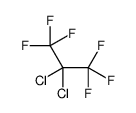 CAS#:1652-80-8
CAS#:1652-80-8 CAS#:76-18-6
CAS#:76-18-6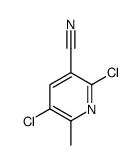 CAS#:84703-17-3
CAS#:84703-17-3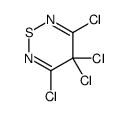 CAS#:51915-27-6
CAS#:51915-27-6